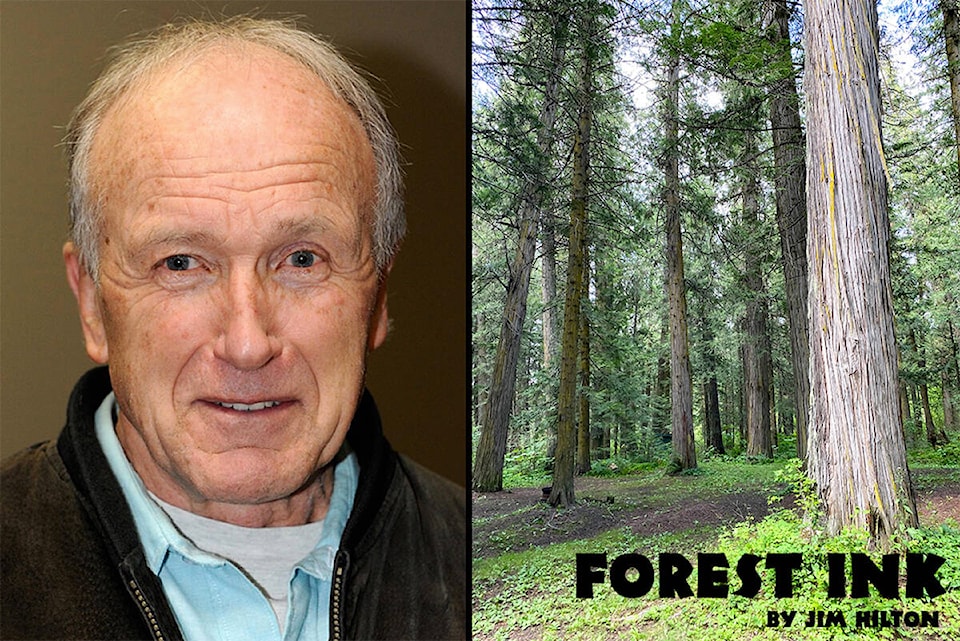I recently came across the 63-page paper entitled The Perpetual Forest - Using lessons from the past to sustain Canada’s forests in the future.
The authors decided to collaborate on a joint submission to the 1999 Canadian Institute of Forestry’s annual meeting in Banff, Alberta.
Authors Mike Apsey, Don Laishley, Vidar Nordin and Gilbert Paille have a wide variety of government , public and private forestry experience and also recognize the input of six other people who reviewed the report before its final draft.
Since it has been 24 years since the publication, I thought it would be valuable to see what changes may have resulted from the papers proposals.
The main headings in the paper include forest practices, education, research and forest policies including tenures, but I will spend most of this article on the section entitled: Canada’s forests in the future.
As I suspected, the main emphasis was on the industrial aspect of forestry but it became obvious that increasing public pressure was going to mean more non timber values would need to be considered as indicated in the following statement.
Sustainable forest management, as described in the 1998 Canada Forest Accord, has as its objective “to maintain and enhance the long-term health of our forest ecosystems, for the benefit of all living things both nationally and globally, while providing environmental, economic, social and cultural opportunities for the benefit of present and future generations.”
Some of the specific proposals included the following: A fundamental principle of a new forest-revenue system should be, from the outset, to leave as much money as is needed for adequate management in the forest, rather than removing it in the form of stumpage, royalties or taxes and then returning it through one form of management program or another.
With sustainably managed forests, government should look less to revenues earned from timber sales and more to taxes and other charges on wealth removed from the forest.
Now we also need new forms of tenure to enable the development of sustainable forest management. In doing so we need to start from the beginning, and re-examine the basic assumptions of forest tenure, including the question of ownership. Also the existence of aboriginal property rights, or tenure, must not be forgotten. This does not mean that we cannot devise new tenure policies until aboriginal land claims are resolved, but that resolution of these claims and the adoption of new tenure policies must be done concurrently. If we examine some privately owned and managed forests in Canada, and look at forests in other countries which have been privately owned for a long time, we see that state ownership of forests is not a prerequisite of good forest management. On the other hand, the simple fact of private ownership is, in itself, no guarantee a forest will be well managed.
“Canadians are not opposed to private ownership of land in principle, as is evident by the almost exclusive private ownership of agricultural, commercial and residential property in this country. The dominant role of the Crown in ownership of forest land is an historical oddity, maintained for various reasons, all of which may no longer be valid.
The evidence of our own experience and that of others is that the time has come to reconsider this fundamental aspect of forest policy. Our experience so far has taught us that there is no single form of tenure which is universally successful. This would suggest that diversity of tenure is a desirable characteristic of a new tenure system ,diversity of ownership, diversity of size, diversity of term, diversity of purpose, and so on. Another desirable characteristic is that a new tenure system should rely more on incentives or rewards for attaining a high level of sustainable forest management than on disincentives or penalties for failing to achieve good results.
READ MORE: FOREST INK: North America’s largest biochar plant will be built in Quebec
Don’t miss out on reading the latest local, provincial and national news offered at the Williams LakeTribune. Sign up for our free newsletter here.
